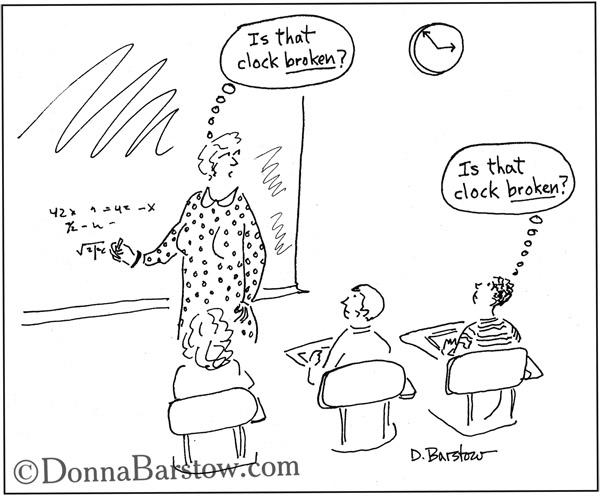This is a question for all the teachers out there. Who’s on your team? Other teachers? Check. The administration? If you’re lucky. Parents? If you’re smart. So…what about your students?



Whoa, I hear you saying, I get where you figure that’s going to help my students, but how will it help me? Won’t it just make my job harder? Well, ask yourself this: does it make you happy to walk into a battle zone every day? Does it feel good to stand up in front of a potentially hostile Them and try to teach? No, I never liked that feeling either. 
So, if you can change the vibe of your classroom from battle zone to team, you’ll like your job, your students, and frankly, yourself a whole lot more. That’s not even mentioning how much better your students will feel and learn.
Ok. You’ve convinced me, you mumble to your screen. But what do I do to change the classroom vibe?
I’m so glad you asked! The first and most important thing is to assume all students want to do their best and to please you.
But, but, what about…
No, I mean all. All students want to do their best and to please you. Once you accept this as axiomatic, then when a student is not acting like they want to do their best, and certainly not acting like they want to please you, you can ask yourself what obstacle is getting in their way. Do they have a learning disability or lack of understanding or skills that is making it hard for them to meet your expectations? Are they under their own stress? What ways have they learned to get attention at home?
Let me give you an example. When my twin brother was in 5th grade, he was leaning back in his chair and tapping his pencil on his desk. The teacher snapped at him to stop teetering. Well, he had never heard the word before, so he made a guess and stopped tapping the pencil on the desk. He didn’t change the position of his chair, ‘cause he had no idea that was what the teacher was talking about. Convinced she was dealing with a defiant, disrespectful student, and that she had better nip this in the bud, the teacher slammed her hands down on his chair, slamming it into the ground. She got into his face and growled, “Stop teetering!” Scared and upset (wouldn’t you be?) my brother began right then and there to hate that teacher. And other students got scared. If the teacher had just thought to check in with him, he could have told her he didn’t know what teetering meant; she would have had a teachable moment; and he would have happily stopped leaning back. What a waste of trust and good will.
Once you begin to ask yourself (and perhaps, gasp! the student) what is getting in their way, approach them with empathy. Just the other day I was talking with a counselor at a school who had trouble convincing teachers that a student needed extra time to turn in assignments when his mother had just passed away. How much empathy does it take to realize that a kid dealing with a death in the family, or divorce, or even a pet dying or a best friend moving away, is not using those events as an excuse to get out of math, but is actually upset and probably overwhelmed?
When you approach a student with empathy about what is getting in the way of her doing her best and pleasing you, then you can start to problem solve together. I had a third grader whose parents were in the midst of divorce. At first, I just let him take a thinking break in the hallway if he needed some time. After a week, I realized I needed him back in the room sooner than he was able to come back on his own. We sat and talked about it, and jointly decided that he would take a little jewelry box with him outside and write down what was upsetting him and put the paper in the box. Then he would take the box home and read whatever was inside it to his beloved nanny. This still honored his need to process his grief over his parents’ divorce, but (literally) put a boundary around the process and allowed him to re-enter the classroom in about five minutes, knowing that his feelings were there waiting for him to have the time and support to attend to them.
Class-wide issues can also be problem-solved with the class. I suggest using an I message about what is bothering you, and then brainstorm ways to solve the problem together. As teacher, I always remain the arbiter about what is feasible (yes, the coats would be less of a mess of we added ten feet onto the back of the classroom, but…), and I always share my concerns for possible drawbacks of the proposed solutions, but I am always amazed with the creativity and good sense of the solutions the kids come up with for our problems. Kids are happy to help solve the problem because they really do care; they are more dedicated to the solutions, since they have some ownership in them; and then we can all celebrate the successful solution together. When I could keep myself focused on this approach, we really did become a team. Their nervous systems, and mine, were much happier for it. And a happy nervous system is the only kind ready to learn.
Enjoyed this post? Sign up for more.
copyright Diana Kennedy 2014



Excellent post.